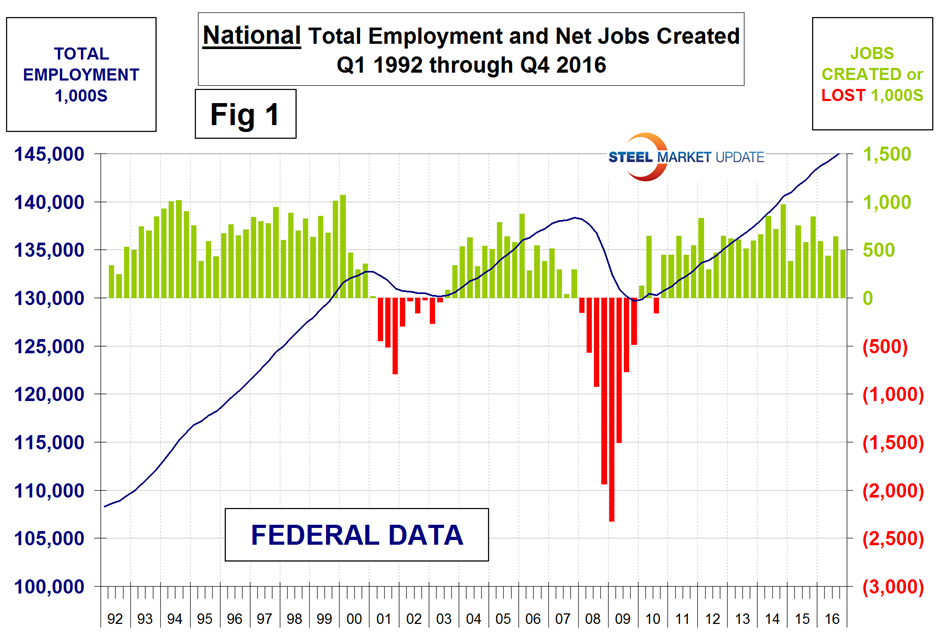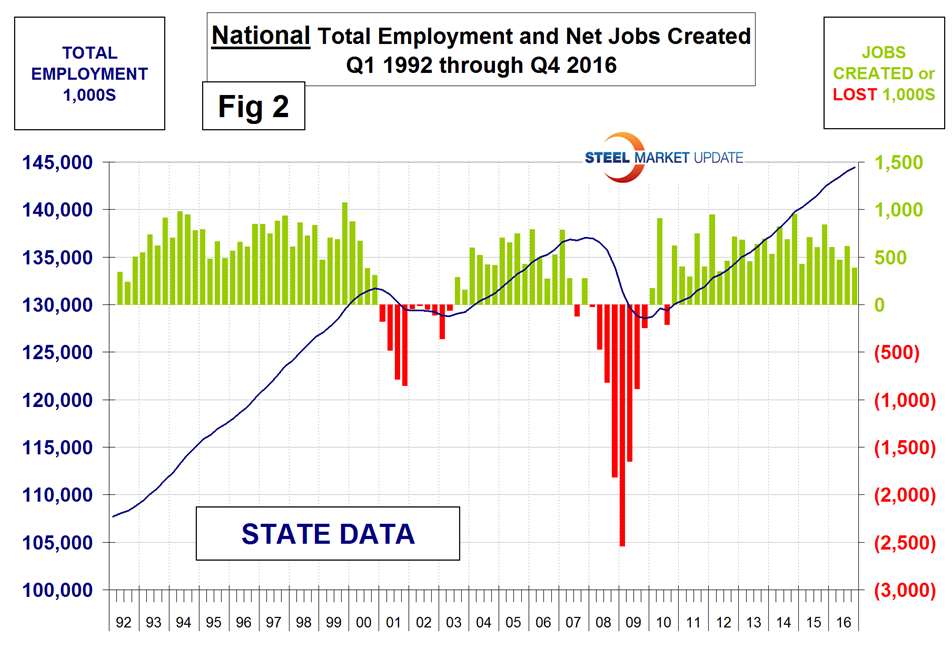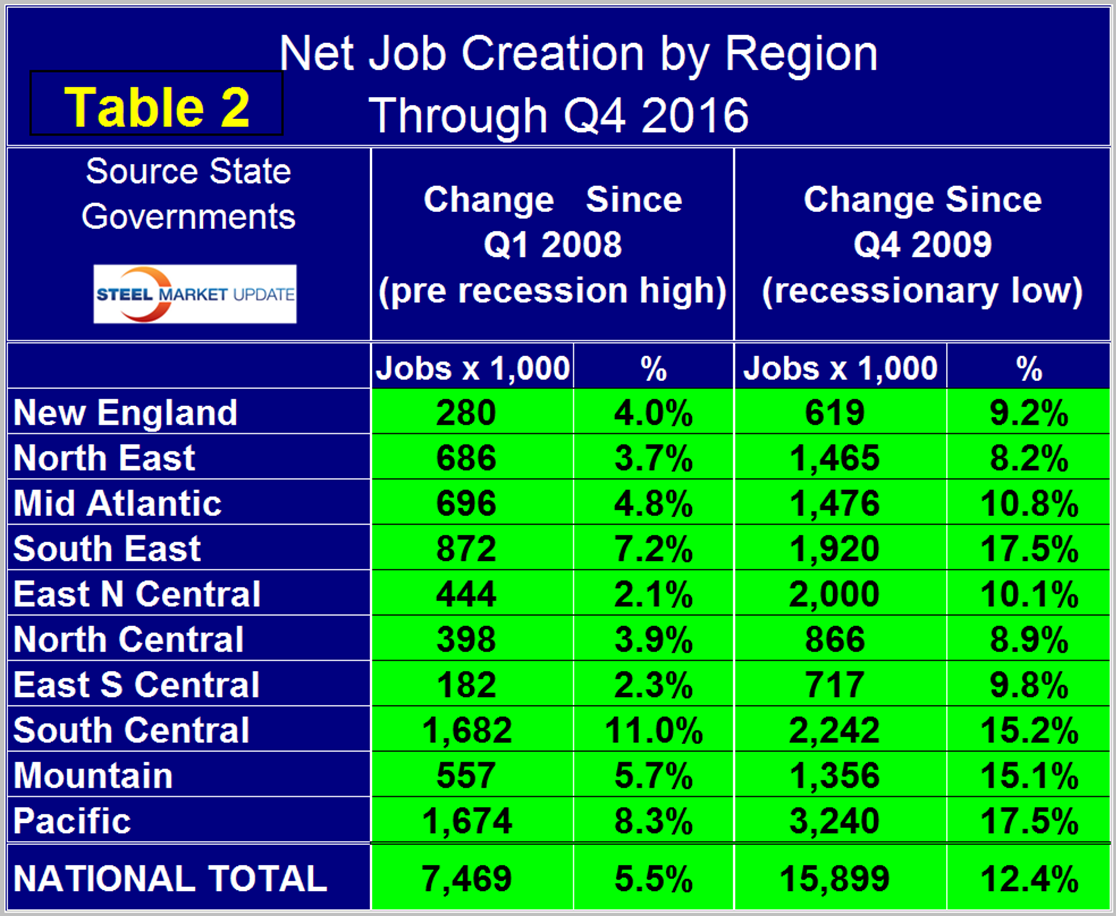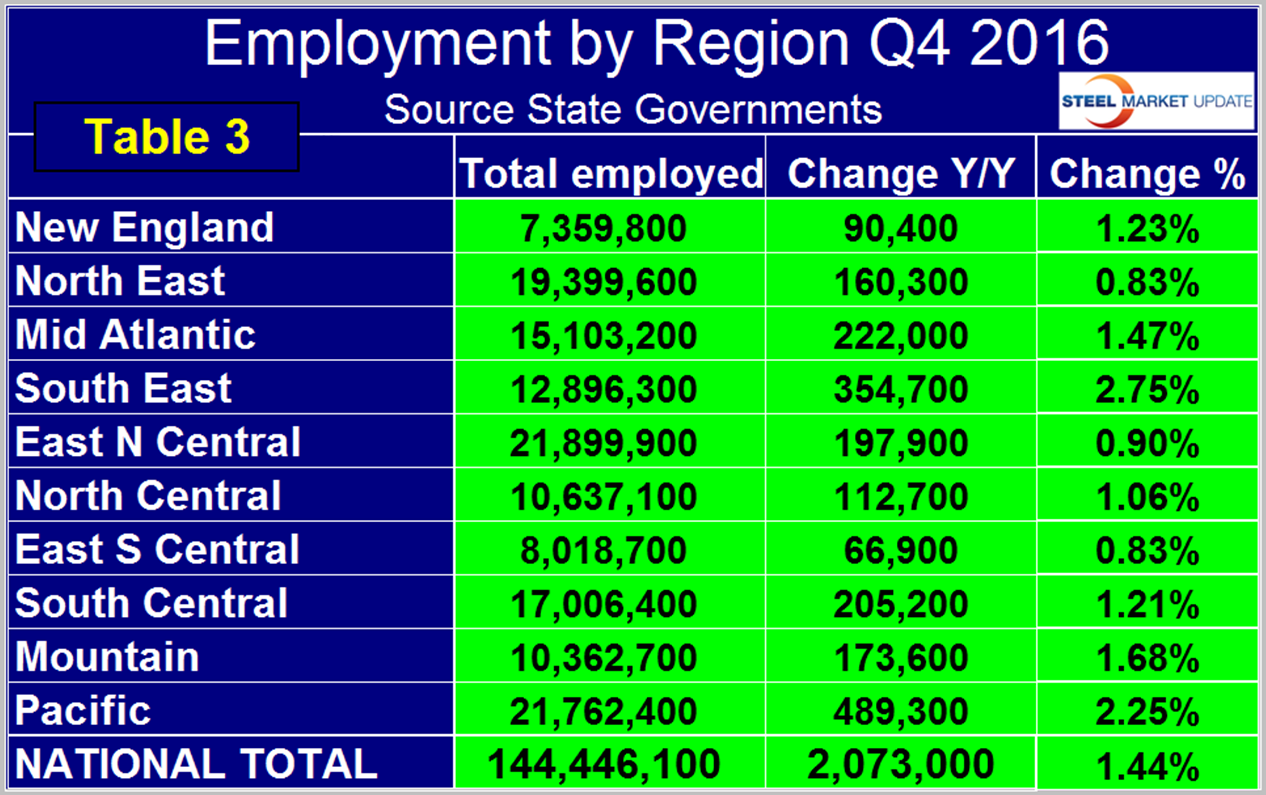Market Data

January 30, 2017
Regional Job Creation for the Fourth Quarter 2016
Written by John Packard
The states compile their employment numbers independently of the Feds, then both are reported by the Bureau of Labor Statistics. The results are close. In the last sixteen quarters since Q1 2013, the Feds reported total job creation of 10,239,000 and the states reported 10,103,000 a difference of only 0.13 percent. Part of this small discrepancy is that the Feds capture off shore military personnel but the states don’t. Figures 1 and 2 show the history of Federal and State totals since 1992. SMU has graphs in the same format for 10 geographic regions and can produce for individual states if a reader so requests.
The 10 geographic regions described in this report are described as follows:
New England (CT, ME, MA, NH, RI, VT)
North East (NY, PA, NJ)
Mid Atlantic (DE, DC, MD, NC, SC, VA, WV)
North Central (IA, KS, MN, MO, NE, ND and SD)
East North Central (IL, IN, MI, OH and WI)
East South Central (AL, KY, MS and TN)
South Central (TX, OK, LA and AR)
Mountain (AZ, CO, ID, MT, NV, NM. UT, WY)
Pacific region (CA, OR and WA)
South East (FL, GA)
Table 1 shows the history of quarterly job creation by region for the last 6 years.
All regions had positive job creation in the final two quarters of 2016. The effect of energy prices is evident in these regional employment reports. The South Central region went off a cliff in Q1 2015 after having the highest job creation of any region in the previous quarter. This region improved in the second half of last year but is nowhere near a full growth recovery. In the eight quarters since Q4 2014, North Dakota has lost 32,900 jobs, Oklahoma has lost 10,800 jobs but Texas has gained 391,800 jobs. The Pacific region created the most jobs in each of the last three quarters of 2016 followed by the South East. The only region to have a negative quarter in 2016 was the East South Central which lost 5,300 jobs in Q2, mainly in Mississippi which was down by 10,000. Alabama was up by 7,300.
The regions have fared very differently since the pre-recession high of Q1 2008 and since the low point of Q4 2009. There are now 7,469,000 more people employed than there were immediately before the recession but of that number almost half occurred in the South Central, and Pacific regions (Table 2).
The third quarter of 2015 was the first time that every region had more people employed than it did at the pre-recession peak. The Pacific has had the largest number of jobs created during the recovery with an increase of 3,240,000 positions which amounts to 17.5 percent of total employment. The South Central is in second place with 2,242,000 jobs created which is 15.2 percent of total employment. Employment is now 15,899,000 positions higher than it was at the low point of the recession. The East North Central currently has the highest number of employed people with 21,899,900 but the Pacific with 21,762,400 is catching up fast (Table 3).
During the depths of the recession in Q1 and Q2 2009, the East North Central had the highest number of job losses
SMU Comment: We believe it’s important for those subscribers whose businesses are substantially regional to have as much data as possible to compare their own results with those of their locality. This report along with regional GDP which we also report quarterly is intended to help in that respect.












